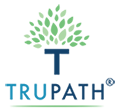What is Guanfacine?
Guanfacine is a prescription medication that is given to people who have attention deficit hyperactivity disorder (ADHD), usually given in tandem with a total mental health treatment plan that involves education, psychological care, and social measures. Guanfacine is the generic drug name, and this medication is often prescribed to treat ADHD in children between the ages of 6 and 17 years of age under the brand names Intuniv and Tenex.
This medication is a non-stimulant centrally acting alpha 2A adrenergic receptor agonist medication and is not a controlled substance. It controls nerve impulses along some pathways, relaxing blood vessels and lowering blood pressure. Because of this, Guanfacine can also be used to help control high blood pressure in children and adults.
Research has been started on Guanfacine’s effects on cocaine-dependent individuals, and people dealing with alcohol cravings, nicotine cravings, cocaine cravings, and stress arousal while in recovery. It has been determined that a lowered heart rate changes a person’s response to stress, which, in turn, helps lower stress-induced relapse.
It is not known exactly how this medication works to treat ADHD, but researchers believe it may affect receptors in the areas of the brain that work to strengthen what is known as “working memory”, a theoretical concept stating that there is a part of the cognitive system that holds information on a temporary basis, involved in decision making and behavior. Improving working memory would theoretically reduce distractions and improve impulse control, thus improving ADHD symptoms like:
- Being disruptive
- Having a short attention span
- Having difficulty with organization
- Being unable to stick to tedious or time-consuming tasks
- Appearing forgetful
- Excessive talking and fidgeting
- Acting impulsively or carelessly
- Being temperamental
Guanfacine is taken by mouth, usually once or twice daily, and should not be chewed, split, crushed, or taken with a high-fat meal. Depending on the brand, it may be prescribed in 1 to 4 mg extended-release tablets, or 1 to 2 mg immediate-release tablets.
Guanfacine Effects
Common side-effects of Guanfacine include:
- Dizziness and drowsiness, especially when you first start the medication
- Sleepiness
- Irritability
- Headache
- Dry mouth
- Low blood pressure
- Sweating
Some rare and/or dangerous side effects may include:
- Vomiting and stomach pain
- Very low heart rate and blood pressure
- Fainting
- Dangerous sedation and slow heart rate if used with alcohol or other drugs or prescription medications. It is important to take the correct dose of Guanfacine as prescribed by ADHD medical professionals and never mix
Signs of Guanfacine Abuse and Addiction
Guanfacine is a non-stimulant attention deficit hyperactivity disorder medication, meaning it does not get you high. There is not a high risk of Guanfacine abuse, it is not a controlled substance, and a Guanfacine addiction would be a rare occurrence. If a person were to develop a psychological addiction to taking Guanfacine, they may exhibit symptoms like:
- Stealing other people’s attention deficit hyperactivity disorder medication
- Faking ADHD symptoms to get more Guanfacine
- Taking more Guanfacine than they were prescribed or using it in ways not prescribed by ADHD medical professionals
- Substance abusers may feel like they can’t get through the day without Guanfacine or have a drug craving to take Guanfacine when they don’t need it
Guanfacine Withdrawal Symptoms
Withdrawal symptoms that commonly occur when a person stops taking Guanfacine may include:
- Headache
- Nervousness
- Agitation
- Fast heartbeat
- High blood pressure
Reducing your dose gradually under a doctor’s care is the best way to ensure you do not experience these symptoms.
Long Term Side Effects of Guanfacine Abuse
Because Guanfacine’s effects include stomach issues, long-term use of even a regular prescription Guanfacine dose can cause constipation over time. You may also experience:
- Weight gain
- Unusual dullness or sleepiness
- Syncope (fainting) may be made worse due to the effects of Guanfacine
- This medication may have adverse effects on the liver over time
Guanfacine Addiction Treatment
Stopping Guanfacine should be done under medical supervision, tapering off the level of medication in your system by no more than 1 milligram every 3 to 7 days. If you were to stop “cold turkeys”, withdrawal symptoms like increased heart rate and high blood pressure could theoretically occur. If you want help stopping the use of your ADHD medication safely, within a safe program offering mental health support and therapy, please contact TruPath. Our team of caring, non-judgmental staff can provide you with the support you need as you work with ADHD medical professionals to taper off your medication. We offer more than drug and alcohol abuse and addiction treatment, we also have dual diagnosis programs, trauma-informed care, individual therapy, group therapy, family therapy, and case management services to help you in all aspects of life. Please contact our center today to find out more about insurance coverage, therapy, and how we can help you.
